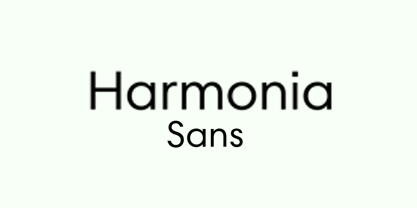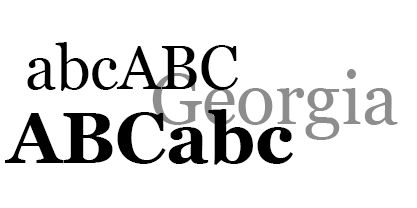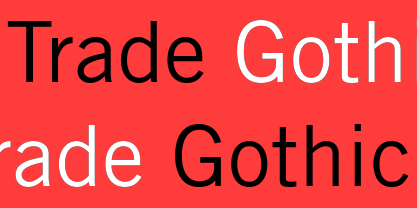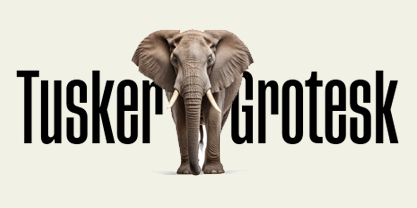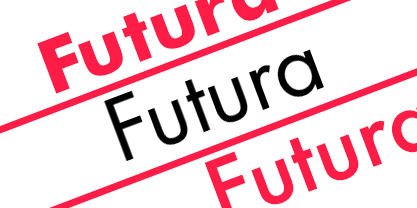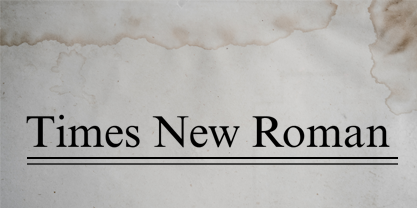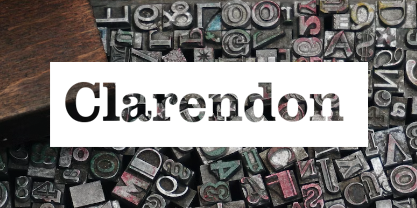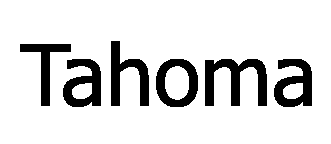
Tahoma
About "Tahoma"
Tahoma™ Family stands as one of Microsoft's most widely used sans-serif typeface families.
Initially comprising two Windows TrueType fonts—regular and bold—the original Tahoma™ Family was crafted to address the challenges of on-screen display, especially at smaller sizes within dialog boxes and menus.
In 2010, Ascender Corporation expanded the Tahoma font family by introducing italics.
As a result, the family now encompasses four fonts: Tahoma regular, italic, bold, and bold italic.
Renowned type designer Matthew Carter designed the Latin, Greek, and Cyrillic characters, and Tom Rickner, a leading hinting expert, provided hand instructions.
Setting new standards in system font design, Tahoma is recognized for its excellence in User Interface scenarios and other contexts requiring clear on-screen information presentation.
The character set includes Latin-1 and WGL Pan-European (covering Eastern European, Cyrillic, Greek, and Turkish scripts).
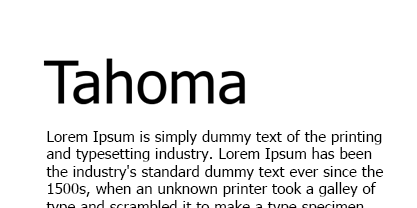
폰트 패밀리
Tahoma 폰트 패밀리
디자이너
Matthew Carter
퍼블리셔
Microsoft Corporation 파운드리
The Segoe Script is a part of the Segoe family of fonts, originating from Microsoft. Its design, credited to Carl Crossgrove, was inspired by the handwriting style of Brian Allen. The Segoe Script Family, comprising of 2 fonts, is characterized by elegant handwriting script fonts. The character set of the Segoe Script font includes Latin-1 and WGL Pan-European (Eastern Europe, Cyrillic, Greek and Turkish). The font specifically features extended strokes that are inherently present in cursive handwriting.
출시일
라이센스
※ 아래 라이센스 표는 참고용입니다.
폰트 제작사의 규정에 따라 사용범위의 변동이 있을 수 있으므로 정확한 사용범위는 폰트 제작사에 확인하시기 바랍니다.
Desktop: Utilized on a desktop workstation. Suitable for various personal and professional scenarios, within desktop applications that incorporate a font menu. For instance, integrate the font on operating systems like Mac OS X or Windows, employ the font in desktop programs such as Microsoft Word, Mac Pages, Adobe InDesign, Adobe Photoshop, etc. Design and generate documents as well as static visuals (e.g., .jpeg, .tiff, .png). Desktop licenses are based on the font user count. Modifications in user quantity can be made through the quantity dropdown option on procurement interfaces. It is advisable to examine the foundry's Desktop license to understand potential constraints which might include logo/trademark usage, geographical limits (number of sites), and the creation of marketable goods. To augment users post-purchase, Desktop licenses are aggregative. For extra users, just re-purchase the identical Desktop bundle for the necessary quantity of users.
App: Approved for integration within mobile apps. Choose this license type for app development on platforms like iOS, Android, or Windows Phone, incorporating the font file into your mobile application's coding.
Webfont: Reserved for website application. Employable on a singular domain. Entities managing numerous websites must not distribute a singular webfont license across multiple sites. Each access of a page utilizing the webfont (calling the webfont kit CSS with @font-face rule) triggers a pageview count per webfont in the kit. If webfonts are utilized in website graphics, a Desktop license may be more appropriate. Multiple webfont licenses exist: Annual, Pay Once, and Pay As You Go, of which only one option will be accessible per webfont.
Digital Ad/Email: Suitable for HTML5 digital ads. This license allows font embedding in digital advertisements, for instance in ads designed with HTML5. Provided kits can be utilized within digital ads such as banners. These kits may be shared with third parties producing ad creatives on your behalf, with you retaining full responsibility. Advertising usage patterns differ from those of websites; therefore, the Digital Ads EULA presents terms conducive for use in digital ads and ad networks. Given the varied nature of ad impressions, prices are designed to reflect this, favoring the Digital Ad license for predetermined impression counts or for retrospective adjustments at each month's conclusion.
Electronic Doc: Permitted for embedding within electronic texts such as eBooks, eMagazines, eNewspapers, or interactive PDFs. Licensing is determined by the frequency of publication use, with each edition representing a new publication. Variants in region or format are not recognized as unique publications, and updated free versions do not require a new license. However, each new paid version does represent a new publication. For font use in e-publishing visual covers, consider a Desktop license.
| Category | Scope of Use | Permission |
|---|---|---|
| Electronic Doc | Embedding in electronic publications | X |
| Desktop | Use on personal or professional workstations, static images, documents | X |
| App | Embedding in mobile apps | X |
| Webfont | Use on websites, single domain specific | X |
| Digital Ad/Email | Embedding in HTML5 digital ads | X |
다운로드
기타
다른 추천 폰트
